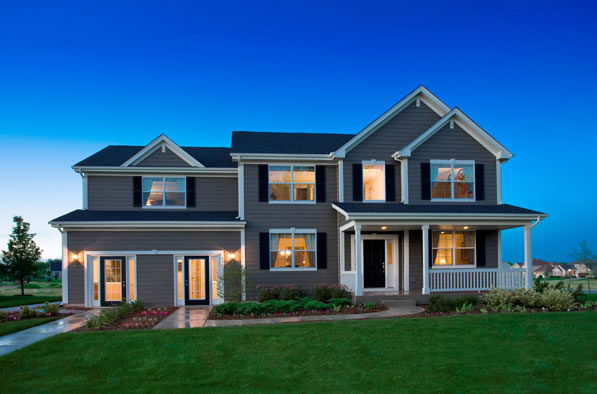Suburban homebuilder William Ryan Homes of Schaumburg, Illinois, is coming up with creative ways to stay on top with a unique “customer-driven design” concept for first- and second-time homebuyers. Founded in 1992, the single-family-home builder has completed more than 9,000 homes in the metro areas of Chicago, Milwaukee, Tampa, and Phoenix.
Vice president of sales and marketing Debbie Beaver talks with gb&d about her research into what aspects of green building William Ryan’s customers want today and how the company is finding ways to build quality homes while working around the market downturn.
What are families looking for today that they were not looking for five years ago?
DB: A lot has changed. Five years ago bigger was better. Today what people are looking for is price per square foot and more functionality per square foot. They want defined, smaller homes with better technology and more appointments. Rather than a 3,000-square-foot home with vinyl and carpet, they would rather have a 2,500-square-foot home with granite and hardwood.
These days, more often than not, the families have duel incomes, so they are looking for homes that make their lifestyle easier. We did a buyer focus group, and what we heard often was [the desire for] conveniences that [would make] life easier for a working mom. They wanted things like mudrooms … and core living areas with a combined family room and kitchen that includes a pocket office where kids could do their homework and keep things organized. We ended up completely redesigning our homes to incorporate these ideas.

William Ryan Homes has found that homeowners want interiors that are open and designed to accommodate the hectic lives many families now lead.
Walk me through the process William Ryan goes through in deciding where to build a subdivision.
DB: Using Metro Chicago as an example, we created a matrix and dropped in the top 25 school districts within the Chicagoland area. On top of that, we identified the towns serviced by rail and major interstates into Chicago. If the town answered all three questions as “yes,” then that’s where we focused our next subdivision.
What are you doing today to adjust to market conditions?
DB: Six or seven years ago everyone was out there looking for the next piece of farmland to convert into a 200- to 500-unit subdivision. Our major competition these days really is not other builders; it’s short sales and foreclosures. If people can get a really nice house closer into the city, why should they drive all the way out to the farmland?
In response to this, we have started a new process called the Custom Collection. We took our 13 most popular floor plans that we build in that outer ring of Chicagoland and decided we could take those homes and drop them in, in teardown locations or vacant lots in the inner ring of Chicagoland. We can get homebuyers a home closer, at a price they wouldn’t get from a custom builder—hence the mantra “custom homes without the custom price.”
What green building features are you incorporating in your homes?
DB: Bottom line of the surveys I did on green building—people were willing to make a buying decision or willing to pay a better dollar for a home that saves them money now, a home that saves them money in the future, or a home that improved their air quality.
We took that information using our mantra of “customer-driven design” and went to things like a 93 percent-efficient furnace, programmable thermostats, a MERV air filter for air quality, direct vent water heaters, bath timers in our bathrooms for fans and lights, vented range hoods and microwaves, sealed can lights, passive radon vents in all our basements, R20 exterior wall insulation, R50 in the attic, and low-E windows. We decided [that] rather than make a cheaper home to stay competitive, we would improve the way people live by adding features that customers are looking for at the same price.

